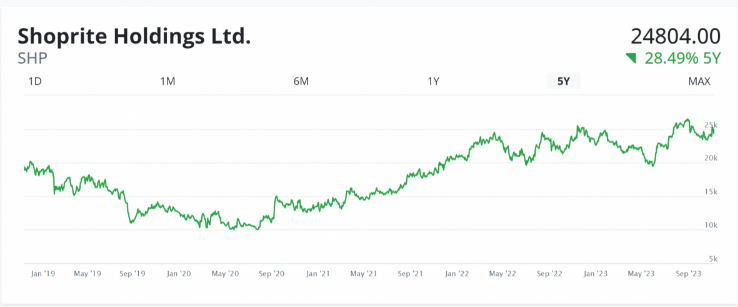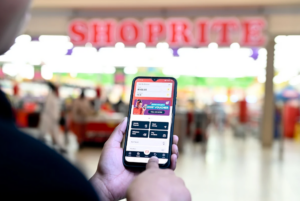The Software Behind Shoprite’s Incredible Success

Despite major electricity challenges and consumer spending pressure during the period, South Africa’s biggest grocery retailer has seen its sales and net profit grow by annual average rates of 7.4% and 4.1%, respectively.
The latter might not seem particularly outstanding, but it is impressive compared to Shoprite’s closest rival, Pick n Pay, which only saw its profit grow by an average of 0.6% over the same period.
The Shoprite Holdings share price on the JSE has reflected significant investor confidence in the company’s trajectory.
From R194.26 per share on 9 November 2018, the price had climbed to R248.04 per share on 8 November 2023, an increase of about 28.5%.

Shoprite’s most recent integrated report specifically acknowledged SAP ERP’s role in achieving its operational efficiencies.
“Our considerable base of 2,791 corporate-owned and managed stores, combined with our enterprise-wide IT system (SAP ERP), provides us with a proximity and platform advantage when it comes to executing our daily operations and delivering on strategic plans,” Shoprite said.
The retailer started using SAP’s human resource and finance software in the late 1990s.
Its rollout of SAP Retail — an integrated ERP system for retailers — was completed at all its stores and distribution centres in 2018.
This initiative saw the highest number of stores of any SAP customers in Europe, the Middle East, and Africa go live with the software within a year.
“1,819 stores, 30,355 users and nine distribution centres moved onto SAP within 12 months,” Shoprite said.
There are roughly 16,000 Shoprite employees on SAP ERP at any given time.
Shoprite told MyBroadband that SAP ERP provided an accurate and complete view of its business to drive strategic decision-making.
“It supports many aspects of our business — from supply chain to store,” Shoprite said.
“[It also] enables legislative governance and compliance across borders, as well as enabling our online and e-commerce offerings.”
In addition, the retailer said that SAP ERP was core to business processes such as listing, pricing, ordering, and ensuring that Shoprite’s inventory was well managed.
“When you walk into a Shoprite or Checkers supermarket and see a full range of products stocked, displayed, priced and with promotions clearly marked, that is what the ERP system does for us,” Shoprite said.
Some of the specific areas in which SAP ERP supported Shoprite’s efficiencies include:
- Production forecasting in the Fresh department.
- Receiving of goods, where 3-way matching of invoices allows us to identify claims and shortages immediately.
- Managing article master data, prices and assortments per store.
- Centralised ordering of stock and document/data sharing with suppliers.
- Ensuring on-shelf availability through real-time sales and stock visibility.
- Enabling complex bonus buys and promotion structures for Xtra Savings customers.
- Giving customers a view of their total lifetime savings on their Xtra Savings card.
- Exception management enabled by mobile technology.
The retailer added that SAP ERP also enforced a consistency of processes across all of its stores, simplifying operations and providing a reliable customer experience.
With a single source of data and reporting, there are no disputes arising from different sources of information.
“The whole business works off the same set of authoritative reports and KPI dashboards, which eliminates noise and supports strategic and operational decision-making,” Shoprite said.
Shoprite also explained how one of its major successes over the past few years — its on-demand delivery service Checkers Sixty60 — benefitted from SAP ERP.
 “SAP Retail is the source of the stock ledger and real-time sales, which are essential for accurate fulfilment of customer orders,” Shoprite stated.
“SAP Retail is the source of the stock ledger and real-time sales, which are essential for accurate fulfilment of customer orders,” Shoprite stated.
“The ERP also provides promotional information, prices and article data to Sixty60, which ensures that the prices on Sixty60 are the same as the prices in-store.”
This article first appeared on MyBroadband.



